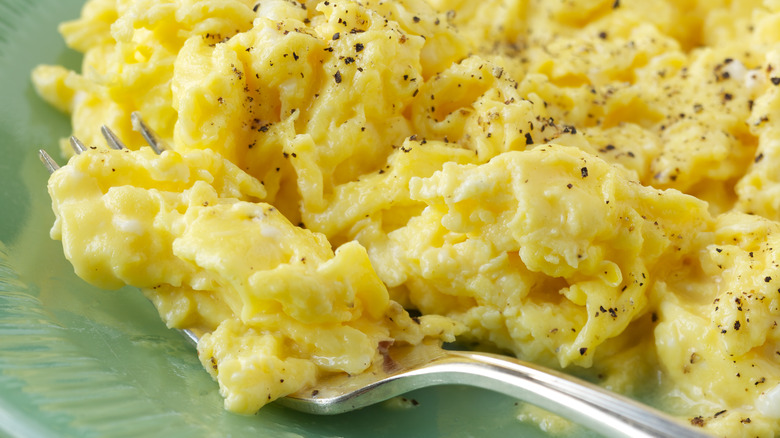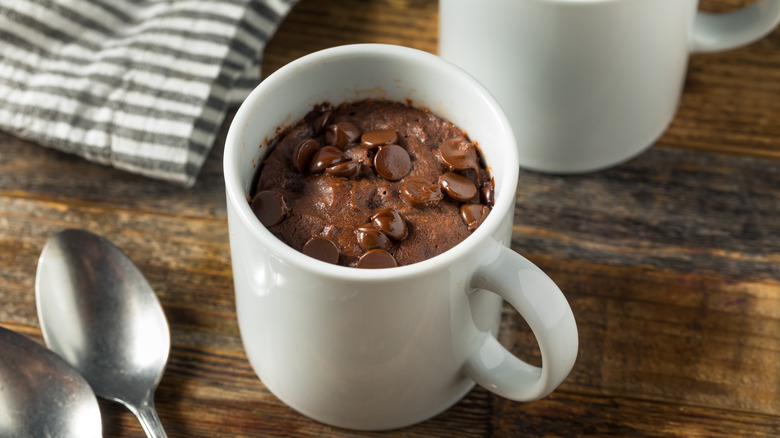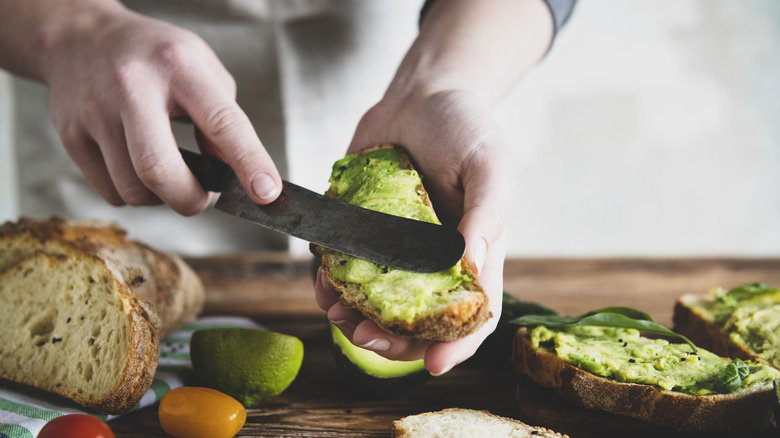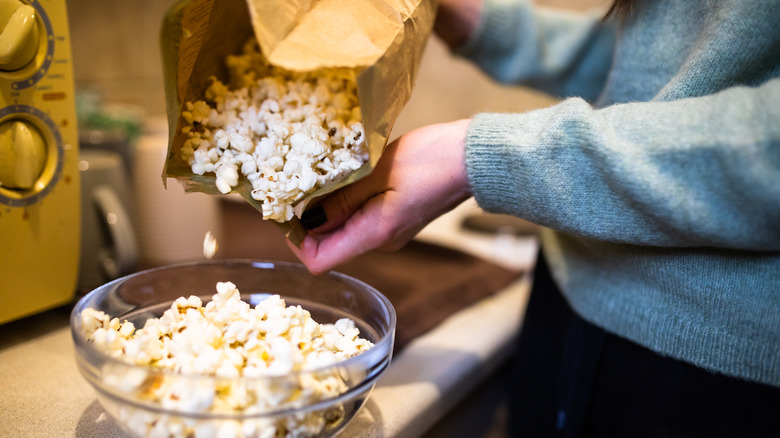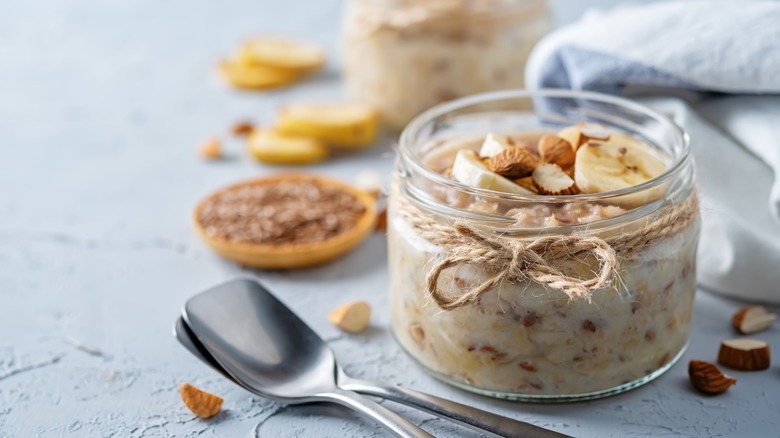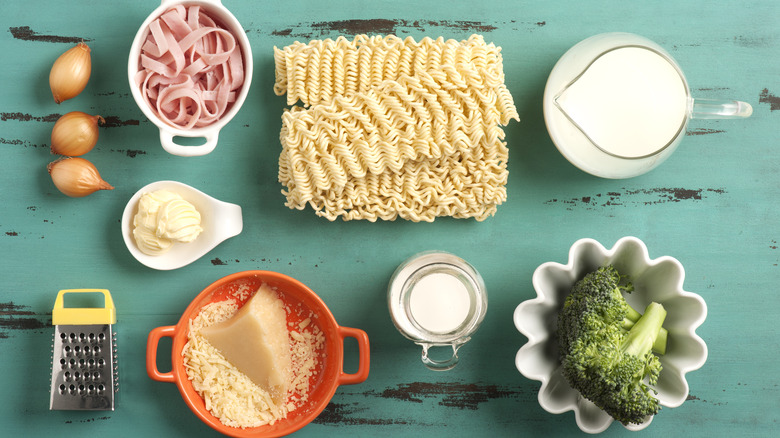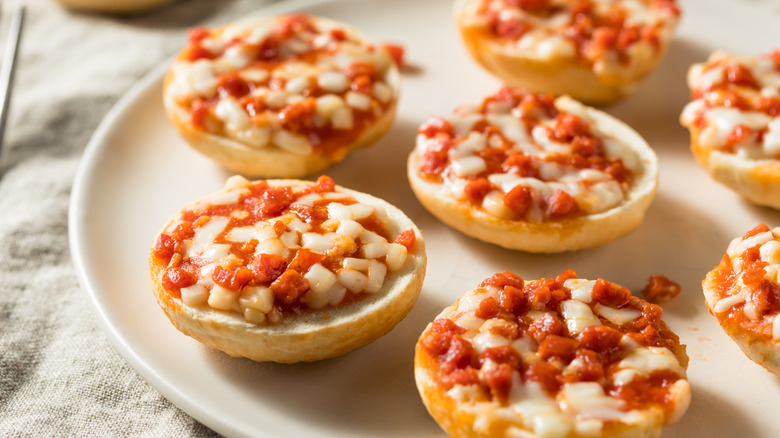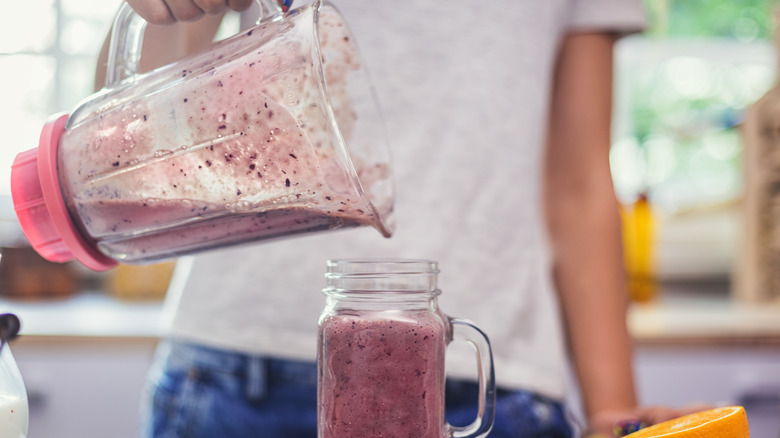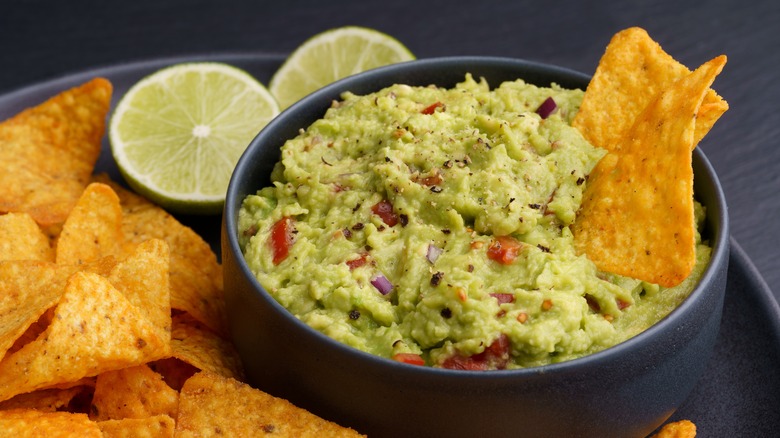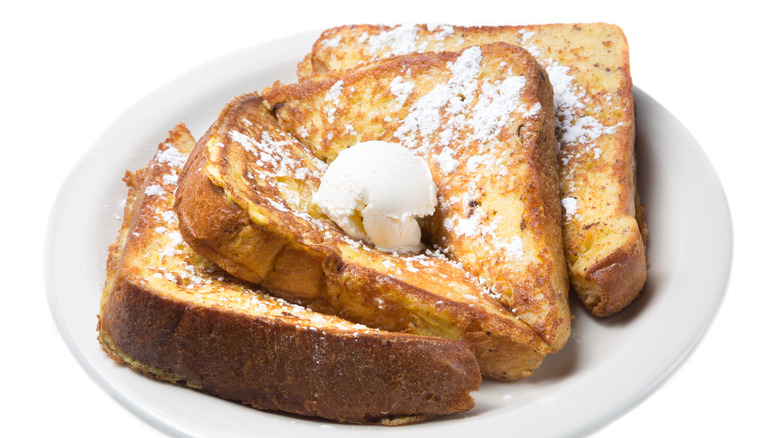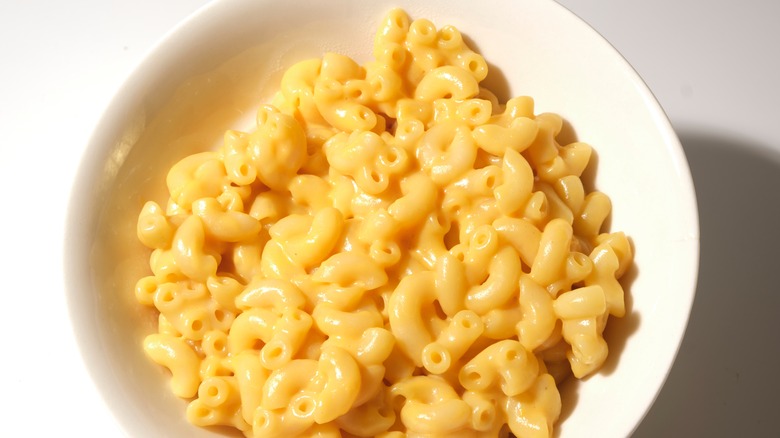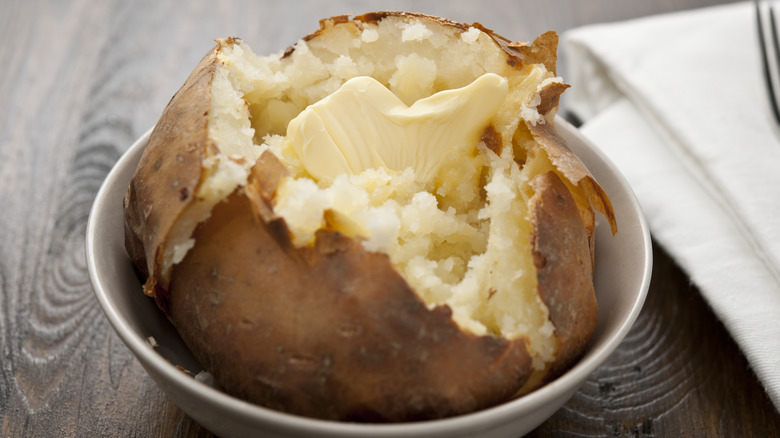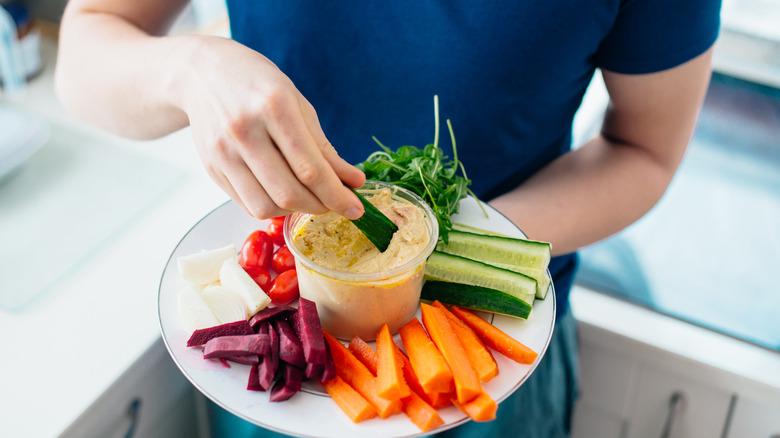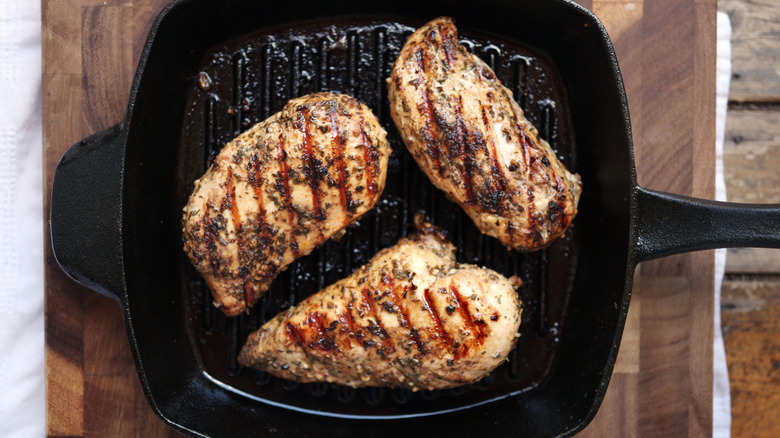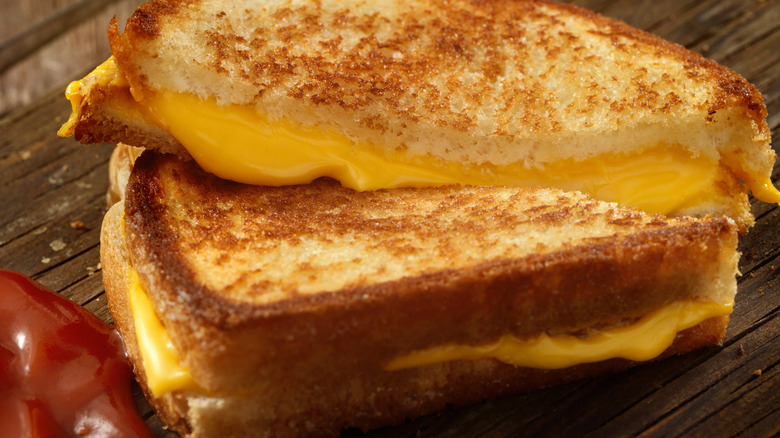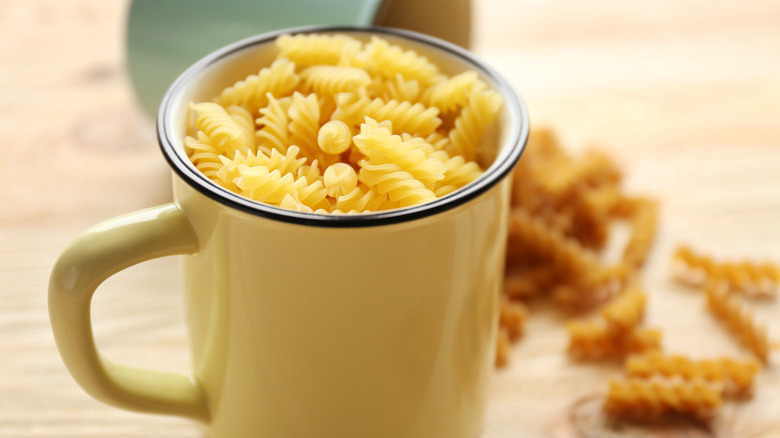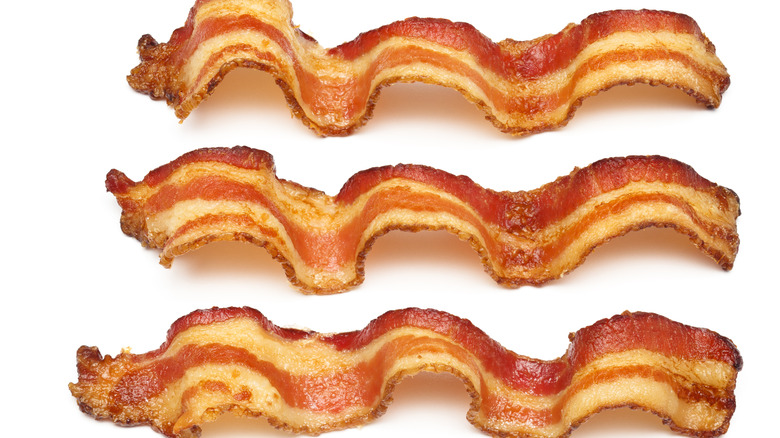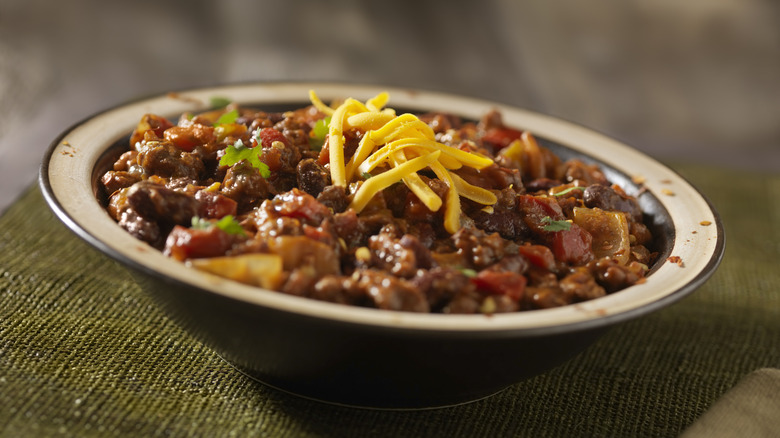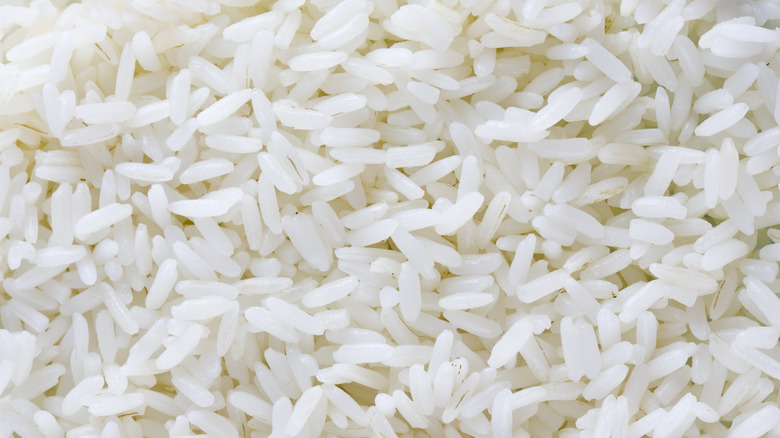20 Dishes You Need To Master Before Going To College
Moving into college as a freshman provides a myriad of firsts for students. It may be your first time being away from your family, friends, and hometown — and you may have to deviate from your room-to-yourself style when you have another person to cohabitate with. For a lot of college students, moving away to a new school also marks a transition into adulthood with an important caveat: You have to start doing things by and for yourself. This, of course, includes cooking.
Most colleges have meal plans (some of which are required) for a reason. They give you access to food throughout the day and prevent the need to install kitchens inside dorm rooms. But the reality is that these dining halls often have funky hours (as if college students are on a "regular" schedule anyway), and the food can be a bit unappealing. If you live off-campus, you may not have access to your school's dining facilities either and are left to fend for yourself in your tiny apartment kitchen. We've assembled some of the most inexpensive, easy recipes that every student needs to learn how to make before leaving for their first day.
Scrambled eggs
Eggs are a nutritional powerhouse, easy to make, and super tasty. Before you go to college, we recommend learning how to make at least two different kinds of eggs — one of which should be scrambled. You can add your scrambled eggs to a breakfast wrap, breakfast sandwich, or eat as-is.
Lucky for dorm-goers, it's totally possible to cook scrambled eggs in a microwave. Simply crack your eggs into a microwave-safe bowl and whisk with salt and pepper. Then, cook the eggs for 30 seconds, remove them from the microwave to stir, and then return for another 30 seconds. You can keep cooking at these intervals until the eggs are at your desired consistency. Add herbs, veggies, cheese, or meat to help make your scrambled eggs even more satisfying and personalized to your palate.
Mug cakes
Do you crave a sweet snack late at night? You'll want to have this single-serve cake recipe on retainer. If you're living in a college dorm room, it might be impractical to have all of the baking ingredients (like the flour, sugar, and leavening agents) on hand for a traditional cake recipe. Instead, you can make a mug cake from a boxed cake mix. Combine some powder, water, and oil in the mug and cook until set. Top with some store-bought frosting, and you'll be all set to satisfy your sweet tooth.
The recipes can get even simpler. Our favorite variation on an OREO mug cake only uses two ingredients: OREO sandwich cookies and milk. Crush the cookies in a Ziploc bag until they resemble fine sand, mix in the milk, and bake in the microwave for less than 90 seconds. It's so easy and so delicious.
Avocado toast
Many folks joke that avocado toast is a millennial food, but it should be called a college student staple. If you have a few spare ripe avocados lying around, you can combine them with your favorite type of crusty wheat toast to make a satisfying breakfast full of healthy fats and potassium.
You can make several upgrades to take your avocado toast to the next level, too; add a sprinkle of flaked sea salt or grated pepper to the top of your toast to keep the herbs on the tip of your tastebuds. If you have spare salad ingredients, such as leftover chopped red onion or sprouts, you can also use them to add texture to your toast. Other handy dorm ingredients that will help you make your avocado toast more satisfying include scrambled eggs for a dose of protein and salsa for a bit of fresh flavor.
Popcorn
Wait, is popcorn even considered a dish? Although we would classify it more in the snack category, it's still a food that every college student should know how to make for snacking and community movie nights alike.
There is some skill in learning how to make the best popcorn, such as seasoning it with peanut butter for extra fat and protein, cooking the bag on the correct side to minimize the number of old maids left in the bag, and storing unpopped kernels in the freezer for maximum freshness. Regardless of if you're making microwave popcorn (which we think is the most conducive for college living) or popping in an air popper, you should always listen to the popping of the kernels to decide when to shut off the heat to prevent burning it.
Overnight oats
Overnight oats is the perfect breakfast in your fridge when you have an early-morning sports practice or don't feel like going to the dining hall before your first class. Combine oatmeal, milk (dairy-free or regular), and seasoning in a jar and leave it in your fridge overnight. You shouldn't prep overnight oats too far in advance because the oats can get too soggy or go bad. You should also refrain from adding toppings like fruits, nuts, or seeds until right before you eat the oatmeal to prevent those toppings from mushing into the rest of the oats.
You can top your oatmeal with almost anything. Some of our favorite inexpensive favorites include cinnamon, sliced apples, and peanut butter powder.
Upgraded instant ramen
As much as we joke about eating ramen noodles in college, no student should have to go through the trials of eating plain, over-salted, dollar-store noodles every day of their college life. There are so many ways to upgrade your instant ramen that are relatively inexpensive and compatible with dorm room cuisine. A splash of sriracha or soy sauce can add unexpected flavor elements to your noodles. For robustness and a more filling meal, you can stick with the more traditional toppings like eggs, mushrooms, or chopped scallions.
It's also important to avoid overcooking instant ramen noodles. The noodles only need to cook in hot water for about two minutes and an additional 30 seconds after you add the seasoning packet.
Homemade pizza
Dining hall pizza is guaranteed to be one of the worst foods you can pick. It always comes out way too bready — and it likely sat under a heat lamp for a long time before you picked up a slice. Try making some yourself instead of relying on the dining hall pizza to carry you through your cravings. You can go the easy way out and use an alternative to pizza crust. Canned biscuits are an easy option for quick mini pizzas. Just separate and roll each biscuit round out, top with your favorite pizza sauce and toppings, and bake in the oven until golden brown.
If you want something a little less intensive, you can also use mini bagels (heist these from the dining hall) or English muffins as a base for pizza.
Smoothies
Compact blenders are an appliance that doesn't take up much space, so they're perfect to bring with you to college. You can use a blender to make smoothies and protein-powder drinks; it will help you get your dose of fruit (and veggies, if you aren't afraid of kale).
Frozen fruit is ideal for making smoothies because you won't have to add additional ice to the beverage (since it's unlikely you have access to an ice maker) and because it tends to come out cheaper than fresh fruit. Stock up on bulk bags of strawberries, blueberries, and raspberries, and grab a couple of bananas from the dining hall. You can also add protein powder or healthy fats like nut butter or avocado to your smoothie to help keep you satiated for longer.
Guacamole
Chipotle and similar restaurants are part of a young student's existence in this day and age. But when you have to fork over extra cash for a scoop of guacamole on your burrito bowl or with your side of chips, your pockets will start to feel it after a while. Instead of getting this dip from a restaurant, try making it yourself. Combine mashed avocados with red onion, garlic, and seasonings to create the perfect dorm room dip to share with friends and roommates.
Guacamole will generally be kept for a few days, so you can spread it on toast, rice cakes, or wraps. The best ways to keep guacamole fresh include covering the top with plastic wrap or water to reduce oxidation.
French toast
French toast is a delicious and easy way to finish off that loaf of stale bread that's been sitting out on your counter. Make a batter with eggs and a splash of milk, dip your bread in, and cook it on a greased pan until golden brown. If you're feeling lazy, take your French toast to a whole new level by substituting the batter with melted ice cream. You can also experiment with other ingredients like vanilla extract, cream, and Nutella to make your French toast breakfast all the more extravagant.
French toast isn't just a breakfast food; you can eat it at any time of day (or night). It's a sweet, satisfying study food that you can transform into a big batch for friends and roommates.
Mac and cheese
No, we're not talking about the cheap Kraft easy mac that plagues the diet of most college students. This simple mac and cheese recipe is perfect when you're craving a homemade meal on a college budget. Al dente macaroni is topped with a decadent cheese sauce and finished with an optional crunchy butter cracker topping. It's a great meal to make for dinner with friends or when you're missing the taste of your mom's cooking.
If you want mac and cheese in a jiffy, you can turn to your microwave. You can cook your pasta of choice in a microwave-safe mug and top with cheese. Add your favorite seasoning or toppings and make this recipe uniquely yours; it's guaranteed to taste better than Kraft.
Baked potato
Baked potatoes are a seriously underrated food to eat in college. Not only is the potato itself filling, but you can fill it with cheese, meat, and vegetables to transform it from a boring side dish into a whole meal. For the most delicious baked potatoes, be sure to adequately wash and dry your spuds before cooking them; this will lead to the perfect crispy skin. Skip the foil and bake on a rack in the oven instead.
If you want to expedite the time it takes to make your baked potatoes, try cooking them in your microwave before putting them in the oven. This can reduce the oven time for your baked potatoes by half and still leave you with crispy spuds waiting to get filled with sour cream and broccoli.
Hummus
Let's be honest: You may not always have the time for full meals when you're going to college. The key, instead, is to snack smarter. Including protein and fat into your snacking routine will leave you feeling satiated and keep hunger at bay while you're in the classroom. One of our favorite ingredients for this is hummus.
For a simple creamy hummus, you'll only need a few ingredients: canned chickpeas (and the liquid aquafaba), tahini, lemon juice, and salt. Add your ingredients to a food processor or mini blender, blitzing until the mixture is smooth and creamy. Dip pita bread, sliced carrots, or cucumbers into your homemade hummus. Leftovers will last up to two days in your refrigerator — but we think it's hard not to eat all of it at once.
Chocolate chip cookies
Talk about comfort food 101. Chocolate chip cookies are always a staple recipe to make for a bake sale for one of the clubs you begrudgingly joined or as a "thank-you" to your friends for helping you move into your dorm room. Or, you can make a chocolate chip cookie in a mug for when you need a single-serve treat after finals week.
Mastering the chocolate chip cookie isn't as easy as you'd think. You need to find the perfect ratio of sugar and fat and the ideal bake time to get a soft, molten cookie or a thin, snappy one. While you can purchase a boxed cookie mix or tub of cookie dough from the grocery store, it's more satisfying (and guaranteed to take your mind off of schoolwork) to have a cookie-baking party with your friends.
Chicken breasts
We can't underscore the importance of a protein-rich diet at college enough. Just because some dining halls have unlimited french fries at all hours of the day doesn't mean your diet should only consist of them. Lean proteins, like chicken, are versatile because you can season them with almost anything and eat them in a wrap, sandwich, or with another starch. They will also keep you fuller for longer than just eating carbs.
The most important thing you need to know about cooking chicken is that it is considered done when the internal temperature is at least 165 degrees F. It's the safest way to check for meat doneness and ensure you won't get sick from eating it. Just don't forget to add a meat thermometer to the packing list!
Grilled cheese
Grilled cheese: so simple and so delicious. If you find yourself hungry in the middle of the night, you can always make yourself a grilled cheese to get you through to the next morning. Your grilled cheese doesn't have to include cheese, bread, or margarine. Elevate your grilled cheese with meaty additions of bacon, ham, or pepperoni, or layer on jalapeños, sliced tomato, or apple for crunch. Get your staple ingredients from the sandwich station in your dining hall and smuggle them back over to your dorm.
A skillet is the best appliance for making a perfect grilled cheese, but you can also make grilled cheese in your air fryer. The recirculating air will ensure that your sandwich browns well on all sides and your cheese melts all over the bread.
Pasta
If you just have to put pasta in water, how hard can it be to make? Although pasta is a deceptively easy dinner idea for a college student, it requires you to know how long to cook the pasta, whether or not to salt the water, and how to pair the perfect sauce. You should always salt your pasta water (with more salt than you'd think) and remove it a few minutes before the recommended time listed on the box to ensure you don't make the big mistake of making it into pasta mush.
If you can't justify doing the extra dishes or cooking a ton of pasta at once, we recommend trying to cook your pasta in the microwave. Add the pasta and the water to a mug and cook a little longer than directed on the box for perfectly cooked pasta for one.
Bacon
BLTs and hangover breakfasts are closer than you'd think — especially if you know how to make bacon in your dorm room. For shatteringly crisp bacon in the microwave, lay the strips on a microwave-safe bowl turned upside-down and place it on top of a plate. The bottom plate will trap any bacon drippings, while the heat from the bowl will ensure your bacon cooks all the way through. You should plan to cook the bacon for about a minute per slice and cook for 30-second intervals if you are craving especially crispy breakfast meat.
Bacon tends to keep very well in the fridge as long as it's stored correctly. Cool the slices to room temperature before transferring them to an air-tight bag to prevent condensation. This method ensures your bacon will stay fresh for at least five days.
Chili
Every family makes chili differently, which is why this recipe is perfect to take with you to college. It stores well in the refrigerator, too, and will have a better flavor if you let it sit in the fridge for the flavors to marinate overnight.
You can make rich no-bean chili if you're not a fan of legumes or amp up the flavor with cheap canned black or kidney beans. The meat element is also straightforward to substitute with low-fat ground chicken or turkey or with a meatless alternative like textured vegetable protein (TVP). You can use your leftover chili in your baked potatoes or eat in your favorite soup mug when you need an easy dinner night idea during the week.
Rice
White rice is essential for many different types of dishes, including curry and stir fry. Knowing how to make rice is an essential skill that you can pair with many different recipes across cuisines. It's also important for when your local Chinese restaurant forgets to pack your pint of rice with your takeout order.
If you don't have a rice cooker handy, you can opt to make your rice on a stovetop or in the microwave. The standard ratio for long-grain white rice (like Jasmine or basmati) in the microwave is two cups of water for every cup of rice. Heat the rice on full power for 15 minutes; the exact length of this cooking time may vary on the strength of your microwave. Then, allow the rice to rest for at least five minutes until fluffy.

